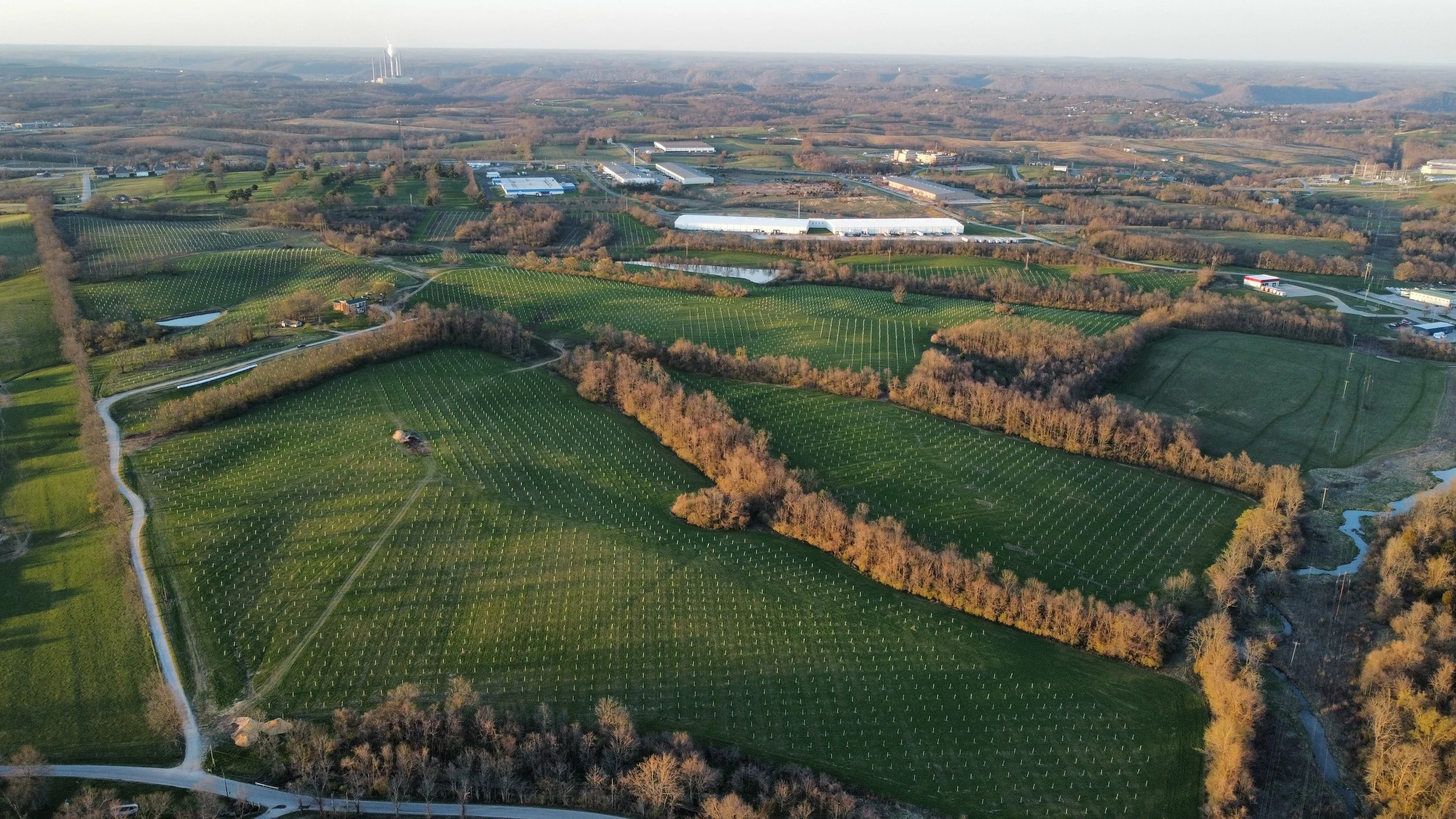Why We Don’t Plant American Chestnuts
American chestnuts make for a really good story. They’re a native tree that fed wildlife, native Americans, and the mountain people for thousands of years. But the tree succumbed to an invasive fungus from Asia, known as the chestnut blight. “Extinct in the Wild,” perhaps. American chestnuts make for a bipartisan hero’s journey, steeped in patriotism and nostalgia. Everyone is waiting for the return. In the meantime, there’s a massive opportunity to plant chestnut trees that might not be American, but that certainly produce food and augment the ecosystems of our Appalachian mountain majesties.
The American Chestnut, late 1800’s
There are numerous organizations committed to the rescue mission of the American Chestnut (Castanea dentata). Most notable are The American Chestnut Foundation and SUNY ESF. There are two prevailing narratives in the space. The first is that we can breed a blight-resistant American-Chinese hybrid: 99% American, but also resistant to the chestnut blight. This line of thought has been around since the blight first showed up, and we’ve been “almost there” since the 1980s: just a few more trials, and we’ll be able to “bring it back.” But alas, the American chestnut rescue mission is deeply divided, with some scientists accepting that the more American the hybrid is, the more susceptible it is to the blight. Others persist, with traditional plant breeding.
The second narrative centers on a GMO chestnut. The “Darling 58” chestnut is pure American, with a single wheat gene introduced. This enzyme (oxalate oxidase) breaks down the toxin that the chestnut blight uses. Darling 58 thus showed blight tolerance, but it was recalled and discontinued due to inconsistent expression of blight tolerance and disruption of other genes in the American Chestnut. It exhibited stunted growth and irregular flowering (not good). Darling 54 is a successor that is currently under review. Some scientists are optimistic, while others have thrown the GMO chestnut out with the bathwater. To be clear, Propagate does not take a position here, but we try to call balls and strikes when asked why we don’t plant American chestnuts. We don’t plant American chestnuts because there aren’t any viable non-hybrid American chestnuts available to plant. Wild genetics are too inconsistent for orchards. In the meantime, we’ve planted hundreds of thousands of blight-resistant Chinese and Chinese-American hybrid chestnuts that produce food from forest-like agriculture – across thousands of acres of farmland.
We are not opposed to planting American chestnuts. It just isn’t our core focus. All things considered, it is important to note that the inclination to feed people with a forest is a very good thing. It just needs nuance.
Chinese chestnuts are an actionable agroforestry solution. If our goal is to feed the world while increasing water quality, mitigating flooding, and increasing biodiversity, chestnuts are a core player on the cold-climate starting roster. In well-drained acidic soil across the eastern United States, chestnuts are not only a food crop that restores ecology, but they’re generally a profitable crop for farmers that have access to capital and are up for a bit of marketing.
Chestnuts have excellent branding. Balkan and East Asian immigrants that grew up with them consume the most chestnuts per capita. Italians are often familiar with chestnuts as a food, and Northern-European Americans tend to view chestnuts with fondness and admiration, even if they’ve never eaten one. The most common question any chestnut growers or vendor gets is: “Are they American chestnuts?” Unfortunately, American chestnuts as a food are unavailable. You cannot buy them because you cannot grow them. When buyers learn that they are Chinese chestnuts, a very subtle disappointment sets in, though curiosity and optimism remain.
Chinese imports generally have bad branding in the United States. We associate “Made in China” with cheap plastic goods from Walmart that exude planned obsolescence (even though our iPhones are made in China). There is a certain aversion to Chinese imports displacing durable American goods, all the while “taking our jobs.” This attitude erroneously bleeds into the Chinese-versus-American chestnut discussion, and we assert that tree species and biology should not succumb to this sentiment – though we empathize with those that feel it. Given the extensive intercontinental trade and transport of food crops, largely starting in 1492, it is important to note that most of the foods we eat are not native to North America. Peaches originated in China. Apples are from Kazakhstan. Chickens (red junglefowl) are from Southeast Asia. Potatoes are from Peru. Wheat is from Iraq. Blueberries, cranberries, raspberries, American persimmons, corn, squash, venison, and bison are all from North America. If you’re keen on cooking with native foods, don’t hesitate to check out The Sioux Chef cookbook. In short: ecological isolationism does not necessarily fit with what most people eat.
We plant Chinese chestnuts because we know what they do for people and the environment. On our acres in Kentucky, we’ve seen a 2x increase in bird and insect biodiversity, compared to a soy control. Chestnut agroforestry produces 2-3 million calories per acre at maturity, with no tillage, which feeds roughly as many people as corn and soy grown for animal feed.
Our mission is to bring chestnuts and other trees onto the farms that feed people good food. If you’d like to work with us to plant chestnuts or other trees on your farm, we offer farm planning services that include GPS-accurate design layouts and financial projections. We then offer tree stock, along with soil preparation, tree planting, and monitoring & advisory services. We also make chestnut information accessible to those that own and manage land. Plant on.
Additional Resources:



